Over the weekend, I baked a 45% rye at my brothers house.
--45% Farmer Ground Flour's rye / 55% King Arthur Organic Bread Flour
approx 1.2% salt
0.8% caraway seeds
approx 70% hydration.
I baked it in a Le Creuset dutch oven in a relatively new Thermador electric oven at 450F/232C for 20 minutes with the lid on and 30 minutes with the lid off. The result, which I posted on my bread blog here on TFL, was light, lofty and crispy.
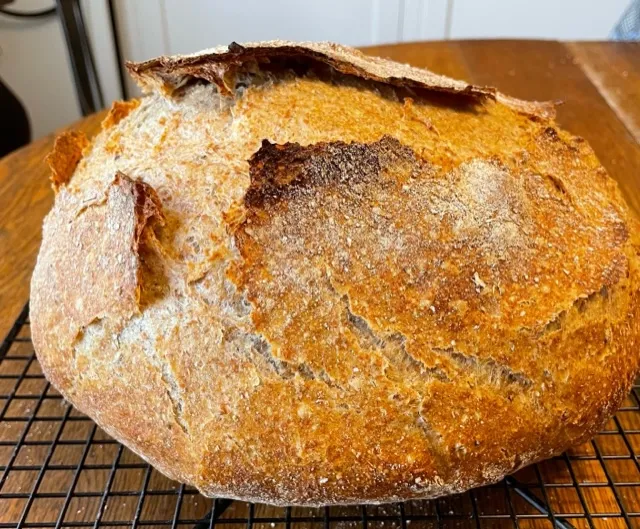
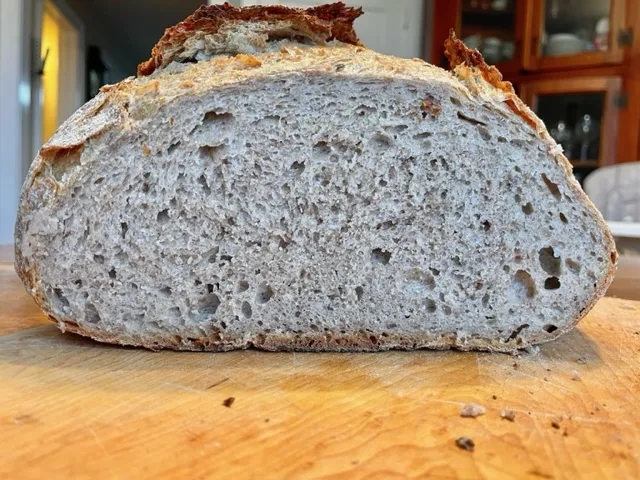
Yesterday, at home, I tried the same recipe and got a strikingly different outcome.
45% Arrowhead Mills Organic Rye Flour / 55% King Arthur Organic Bread Flour
1.2% salt
0.8% caraway seeds
approx 85% hydration (because the flours -- particularly the rye -- were incredibly thirsty and wouldn't come together with less water)
baked at 450F/232C in a no-name dutch oven in an ancient Caloric gas oven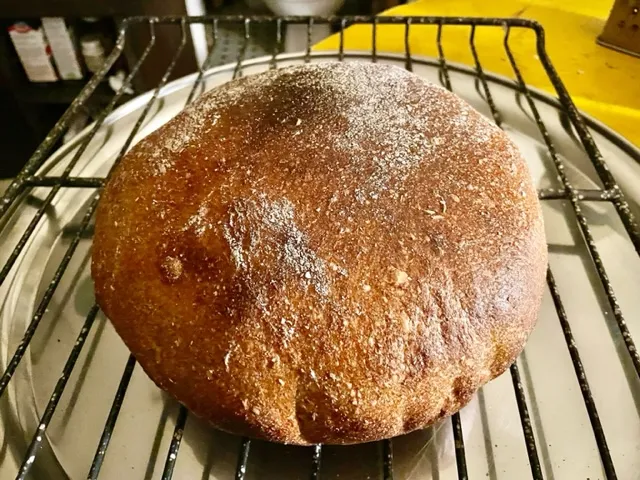
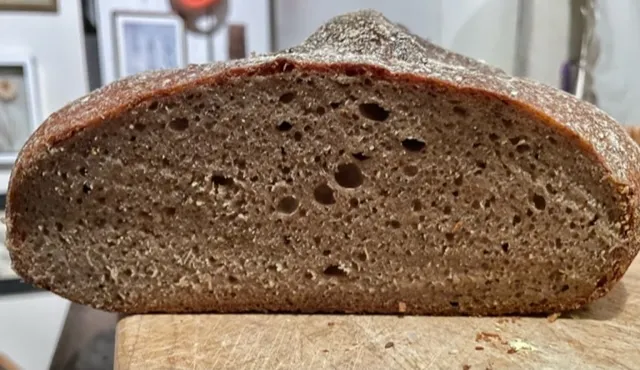
As you can see from the crumb shot, the top fell in a bit after several hours of cooling.
I'm now trying to understand how the same formula can produce such different loaves.
Aside from using Arrowhead Mills instead of Farmer Ground Flour, the major difference was that, yesterday, I weighed the flours and water all together, putting them in the bowl one after the other and re-zeroing each time. Over the weekend, I weighed everything in separate bowls and then mixed all the ingredients together.
As I noted, the Arrowhead Mills Rye, which is fairly finely ground, seemed to require way more water than the Farmer Ground Flour, which is relatively roughly ground.
I think the bread I made yesterday was underfermented and overhydrated. But the flours seemed to need that much water to come together. I'm struck by how much the bread I baked yesterday looks and tastes dramatically rye, though without the trademark caramelized crust, whereas the bread I baked over the weekend had the caramelized crust and taste of a rye but with the loft and crumb of a white bread.
Hmmm.
I'm open to everyone's thoughts.
Rob
How was the handling of the dough, i.e. did the second one feel more like a rye bread than the first? More pasty and less strong? Just asking since the crumb looks so much more like rye or at least whole grain bread than the first one.
I think the fermentation was probably indeed different, but also the grind of rye flour can have a large effect on its behaviour...
And regarding the crust, even with a closed baking vessel, in a gas oven it's much harder for me to produce a nice crunchy crust. Recently I started spraying water on the loaf when loading into the oven in addition to covering it, and I think it's improved the steaming... I used to add some ice cubes, but that's annoying, easier to spray, and I think it works better.
yes, Ilya, it handled like a high rye. Smooth, pasty, & heavy.
yes, it's colder/draftier in my kitchen than in my brother's & I think I underfermented the rye levain, though I fermented the final dough longer.
interesting about your experience using gas. I've baked many a rye in this ancient (late 40s or early 50s🤣) oven and with this no-name DO & have never had a problem getting serious cracks & carmelization.
I'm gonna try again on the weekend with fresh flour and will report back.
what a difference fresh flour and more fermentation time make!
Looks great!
it is great!
2 were for a party & got quickly gobbled up by the guests.
This one was for me:
Image
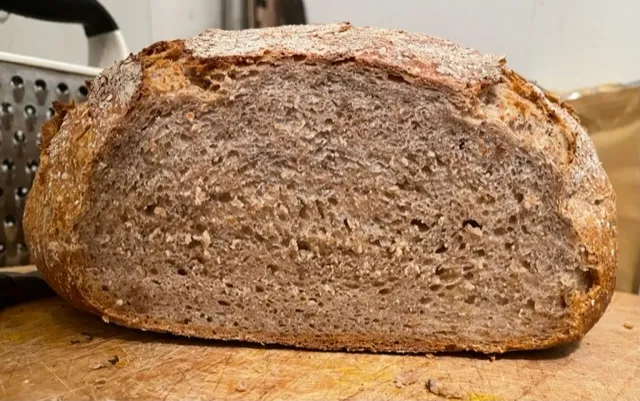
Not as open a crumb as the one I baked at my brother's house. But delicious!
Rob